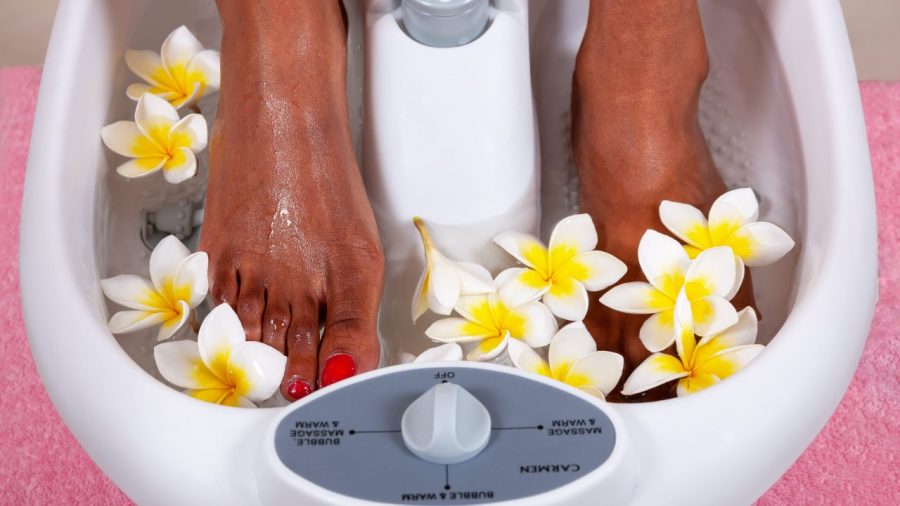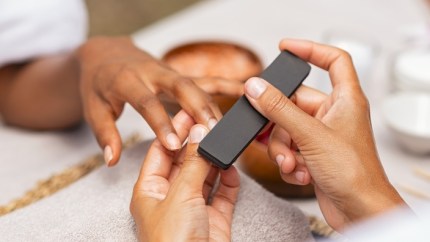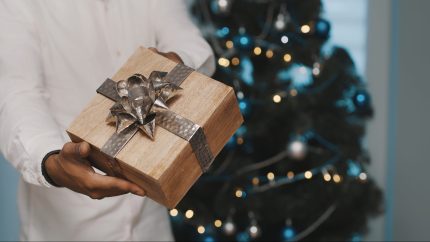6 tips to make sure your nail salon is safe as you prep for holiday parties and strappy shoes
Make sure the "cheese grater" is legal in your state, and ask questions if you don't see "test nails."
No matter the season — winter, spring, summer, or fall — it’s always the perfect time for a pedicure. Holiday parties mean strappy shoes and consequently a trip to the nail salon. While getting a pedicure may seem like a simple and relaxing activity, nail technicians and clients should take certain precautions to ensure cleanliness and avoid potential risks ranging from infection to injury.
Dr. Dornechia Carter owns Affinity Dermatology in Frisco, Texas, about 30 miles outside Dallas. Her specialty includes medical, surgical and cosmetic dermatology, focusing on psoriasis and other conditions, skin cancer prevention, diagnosis and treatment.

As a board-certified dermatologist, Carter had a few pointers to ensure a successful pedicure appointment, starting from the first impression. Her tips, in no particular order, are below:
6. Check out the polish bottles and look for ‘test nails’
“Look around for signs that they place great value in the appearance of the shop,” Carter told theGrio. “Is the place well-kept and lit?”
Carter highlights the importance of examining the condition of nail polish bottles. Are they clean, clumpy, clogged or cluttered? The attention to detail signals the salon’s overall approach to hygiene. She also emphasizes the significance of having a set of ‘test nails’ for customers to try polish colors, noting that without them, people are likely testing the colors on “their bare — and unwashed — nails.”
Hygiene is crucial, particularly for treatments like SNS powder, where fingers or toes are dipped into a powdered concoction. Carter recommends the one-time use of disposable gloves, especially for foot-related services.
5. Determine who should address your nail issues
Dermatologists are highly trained physicians specializing in skin, hair, and nail conditions — and they play a vital role in nail care. With a minimum of 12 years of training after college, including medical school, internships, and dermatology residency, dermatologists understand the skin and its connection to overall health. They continually update their knowledge through regular education and testing. When your nails show signs of color, thickness, or texture change, a dermatologist is the professional to turn to.
In contrast, nail technicians earn their cosmetology license through cosmetology school, usually requiring a high school diploma. Licensed by the state, their training focuses on sanitation, safety, and practical skills for nail sculpting.
Lifestyle
4. Check to see if the ‘cheese grater’ is legal and sterilized
Keep cuticle services to a minimum, as aggressive nipping or trimming, especially for individuals with diabetes, can lead to complications. If you have concerns about ingrown toenails, consult a dermatologist or podiatrist.
Certain foot files, such as the “cheese grater,” may not be legal in some states. If your salon uses them, inquire about their sterilization practices to prevent potential infections.
As for leg shaving, it’s best to avoid doing so shortly before your pedicure treatment. Shaving 24 hours before or after your appointment is fine, but shaving just before can create minor cuts and nicks that serve as gateways for infection.
3. Know the facts about artificial nails, solar lights and red polish
Safety is a relative term, especially in the context of artificial nails. Some folks develop allergies to acrylic nails, resulting in rashes on their fingers and even their face, especially the eyelids. If you’re in this boat, seeking guidance from a board-certified dermatologist can help pinpoint the cause and find suitable treatment.
Both gel and traditional acrylic nails require LED UV lights for curing, which can have unintended consequences. UV exposure from these lamps can age the skin, potentially increase the risk of skin cancer or cause sunburn. As they say, you can gauge a person’s true age by the appearance of their hands and neck – and this curing process may accelerate that aging, contributing to fine lines, wrinkles, and dark spots.

SNS powder does not require UV light, making it a safer choice for those with soft, easily breakable nails. But beware – if they break, they can be painful and challenging to remove without causing further damage or drying out your nails with acetone.
As a reminder, gel and SNS treatments don’t strengthen your nails; they can weaken them over time. Clear polish may provide some relief once the artificial nails are removed, but true strength is restored as your natural nails fully regrow.
Red is a popular color for holiday pedicures. And while neither dark nor light polishes are inherently “bad” for your nails, a red undertone can leave nails with a yellowish tint once the polish is removed.
2. Know when and how to treat fungal infections
Various fungi found in the environment cause fungal infections. Some people are more susceptible to nail and foot fungus, while others face higher exposure to infectious areas. To minimize the risk, avoid walking barefoot in places such as nail salons, spas, gyms, and saunas, all of which are breeding grounds for infections, Carter shared.
If an infection is suspected, consult a board-certified dermatologist as soon as possible for guidance. Treatment options range from creams and gels to pills and even laser therapy. For perfect summer nails, it’s wise to seek care in the fall or winter because it can take several months for nails to regrow following an infection.
Individuals with nail or foot fungus infections or skin conditions like eczema, which causes skin breaks, should delay nail salon visits until the issues are resolved.
1. Consider bringing your own tools
If you’re a regular at the nail salon and have concerns about the condition of their equipment, consider purchasing your own manicure and pedicure tools.
In the end, there’s one thing an expert such as Carter wants everyone to remember before heading to the nail shop – the first being to have a great time. “If this is your time to hang with friends or time to relax on your own, enjoy,” she said. “But really, choose your nail shop AND your service wisely.”
Carter added, “Think long term: cleanliness practices are paramount, and consider the long term effects” of salons with destructive practices.
Never miss a beat: Get our daily stories straight to your inbox with theGrio’s newsletter.








